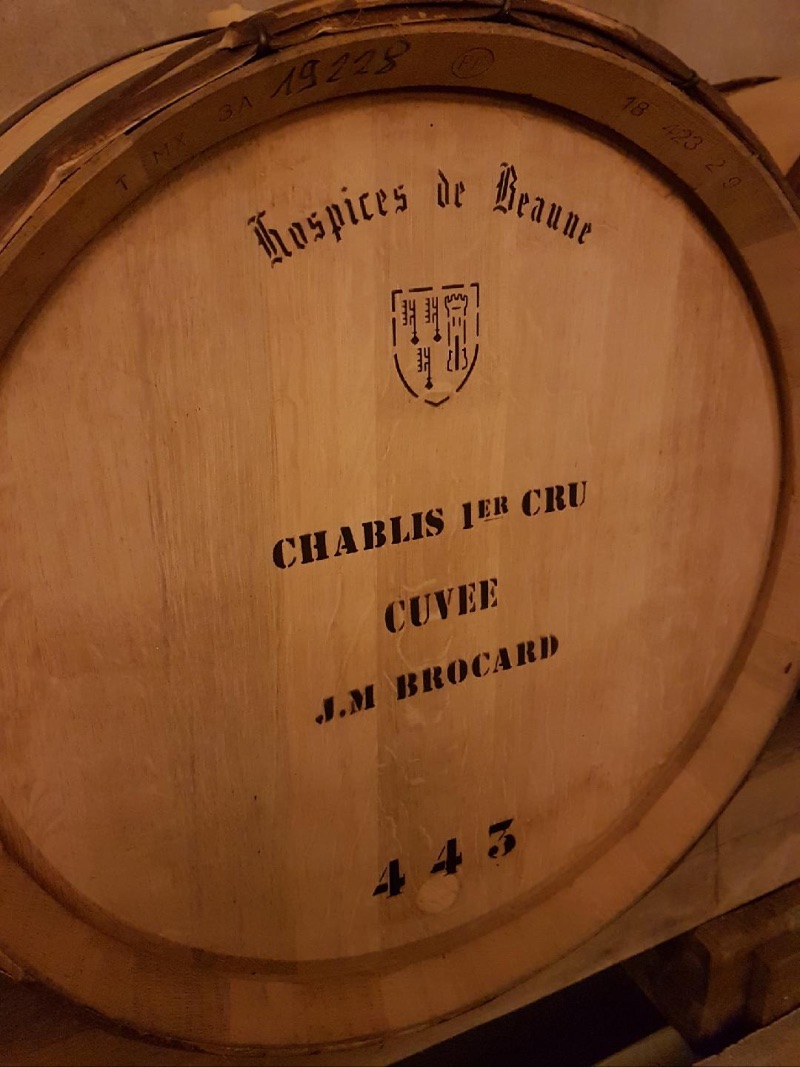In this unprecedented year, important annual events take on an even more solemn character. The 160th Hospices de Beaune Wine Auction, will indeed take place on Sunday November 15, and will be run by Christie’s. This year, following a superb harvest, three “pièces” of Chablis Premier Cru Côte de Léchet from Domaine Jean-Marc Brocard will be auctioned by the prestigious Hospices de Beaune charitable estate (which today comprises 60 meticulously selected hectares in the Côte de Beaune, Côte de Nuits and the Mâconnais). For the sixth year running it will be the only Chablis to go under the hammer.
“We are proud that Chablis is in the spotlight once again at the 2020 Hospices de Beaune Auction,” declared Julien Brocard. “In Chablis, as in all of Burgundy, the 2020 vintage was early and sunny, without being overly influenced by the heat. We’re looking rather at a classic great Chablis: elegant, balanced, and incredibly fresh. A mild, wet winter was followed by spring frosts, but fortunately our vineyard escaped any damage. The spring weather then turned warm, and was followed by a magnificently sunny summer which led us to harvest early, starting at the end of August. The vintage has all the hallmarks of a classic Chablis with great balance, a standard rather than excessive sugar richness, and lovely freshness. The first juices are highly promising, superbly fruity, with typical Chablis marine aromas interspersed with delicious notes of sweet citrus and grenadine.”
Tasting notes for the 2020 Chablis Premier Cru Côte de Léchet by Ludivine Griveau, Hospices de Beaune Estate Manager.
“The Côte de Léchet parcel is tended entirely by Maison Brocard, Hospices de Beaune entrusting them with the application of a joint specifications charter based on Domaine Brocard’s expertise. The vines are, therefore, in the expert hands of Charles Hugo and his teams. The grapes were hand-picked on August 27, with a ripeness that showed perfect balance between the fine potential in sugars (12.8) and very promising acidity. After pneumatic pressing, the lightly clarified juice was transferred to a barrel one wine old. After a few light stirrings, the lees prove very useful in giving fullness to the middle palate. Indigenous yeasts were used for the fermentation and they are finishing their last sugars as I write. This period of latency enabled malolactic fermentation to set in, reflecting the excellent balance that we had foreseen. The sun shone brightly in both Chablis and the Côte de Beaune, causing a few notes of mandarin and grenadine to appear alongside the more classic marine markers of Chablis. The Côte de Léchet is typically ready to drink in five years, or more.”



